Congress Tour
ICTAM 2024 organizing committee is planning various tour programs, including UNESCO Heritage sites on Wednesday for participants. You may register for each tour program by selecting an option on the online registration page.

- Schedule
Wednesday afternoon, August 28, 2024

- Programs
TD1-7 Daegu Tours, TH-1 Hapcheon Tour, TG1-5 Gyeongju Tours, TB1-2 Busan Tours, TA-1 Andong Tour, TC-1 Gimcheon Tour, TT-1 Technical Tour
TD - 1 Daegu
Bukjijangsa Temple-Daegu Bangjja Yugi (Korean bronzeware) Museum-Daegu Textile Museum
Bukjijangsa Temple is one of the three sacred Jizo sites in Korea with a long history dating back to 1539 and is located in the middle of Palgongsan Mountain. In particular, Jijangjeon is designated as National Cultural Heritage Treasure No. 805. There are many other designated cultural properties, including the stone Jizo Bodhisattva, the Amida Three Jewels Buddha, and a Silla-era stone pagoda. The road to Bukjijangsa Temple is green throughout the four seasons, and the scent of old-growth pine trees on the pine forest road is enough to escape from the troubles of the world.
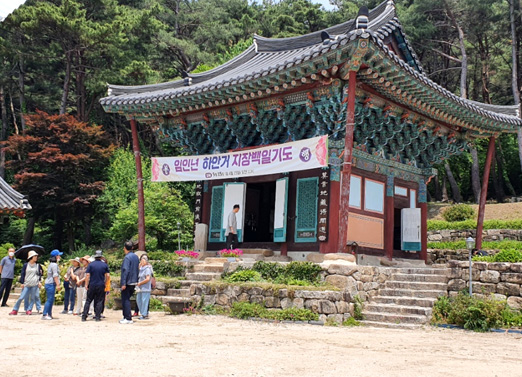

Bangjja Yugi is Korean bronzeware traditionally used to make utensils, instruments, and religious items. Today, it is best known for its use in kitchen utensils, but here, at the only museum dedicated to Bangjja Yugi, you will be able to experience the history behind the art.
The Daegu Textile Museum is a prominent institution dedicated to preserving and showcasing the rich history and vibrant culture of the textile industry in the region. Visitors can explore an array of exhibits that highlight the evolution of textile production, from traditional weaving techniques to modern fabric innovations.
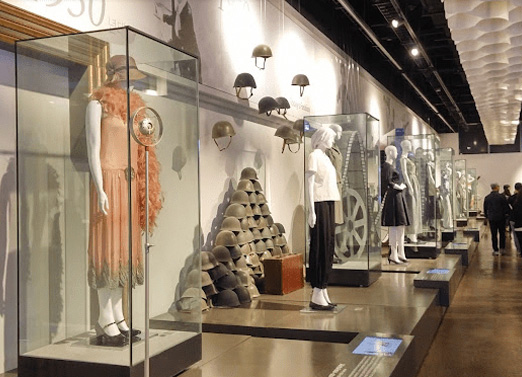
TD - 2 Daegu
Daegu Textile Museum-Memorial Stone for Admiral Sin Sung-gyeom-Donghwasa Temple
The Daegu Textile Museum is a prominent institution dedicated to preserving and showcasing the rich history and vibrant culture of the textile industry in the region. Visitors can explore an array of exhibits that highlight the evolution of textile production, from traditional weaving techniques to modern fabric innovations.

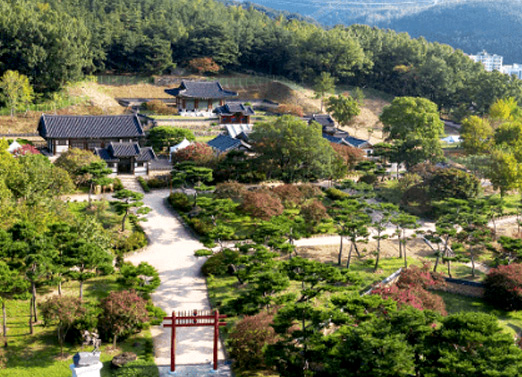
Admiral Sin Sung-gyeom
The Memorial Stone for Admiral Sin Sung-gyeom is a significant historical monument located in South Korea. It commemorates the valiant Admiral Sin Sung-gyeom, a celebrated military hero from the Goryeo Dynasty. Admiral Sin Sung-gyeom played a crucial role in defending the kingdom against invaders. The memorial stone stands as a tribute to his contributions and sacrifices, serving as an enduring reminder of his legacy.
Located 1193m up on Palgong Mountain, it was built in 493 A.D. and is filled with Korean treasures. It is regarded as one of Korea’s most recognizable temples.
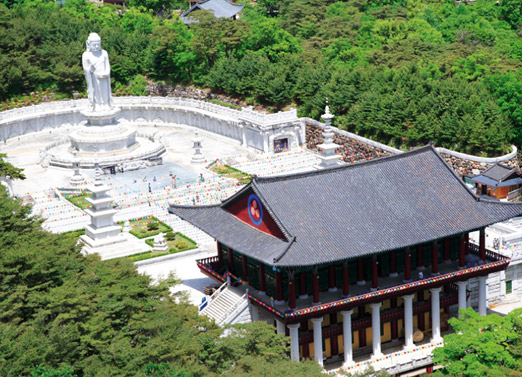
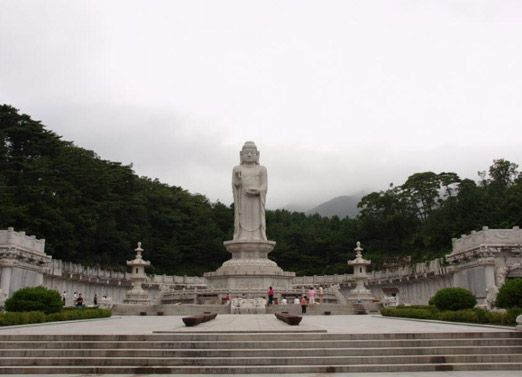
ⓒ Daegu Metropolitan City
TD - 3 Daegu
Hyangchon Cultural Center-Daegu Modern Historical Alleyway-Seomun Market
Cultural Center
Currently a cultural experience center that recreates the area’s history, it was once Daegu’s old city center. Previously a place of economic growth and a home for refugees during the war, it now serves as a home to artists of music, literature, and theater.
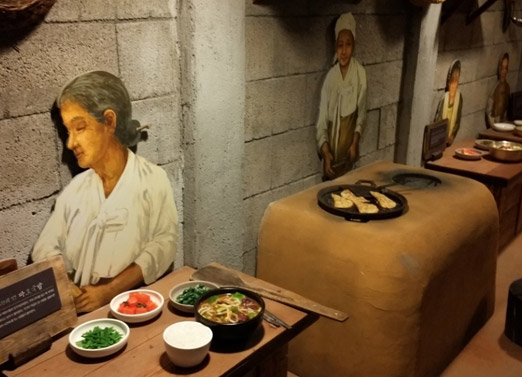


Historical Alleyway
Travel through Daegu’s modern and contemporary history and embark on a voyage through time. Since Daegu was less affected by the Korean War than other parts of the country, you will be able to see the city’s past and its present.
Located near downtown, it is the biggest market in Daegu and boasts a rich history as one of the three biggest markets of the Joseon Dynasty. Today, it is known for its wide variety of food and its emphasis on selling textile goods. It also features a night market that is open from 7:00 p.m. on Fridays through Sundays.

ⓒ Daegu Metropolitan City
TD - 4 Daegu
Seomun Market-Apsan Mountain-Dongseong-ro
Located near downtown, it is the biggest market in Daegu and boasts a rich history as one of the three biggest markets of the Joseon Dynasty. Today, it is known for its wide variety of food and its emphasis on selling textile goods. It also features a night market that is open from 7:00 p.m. on Fridays through Sundays.


Apsan is a picturesque mountain known for its scenic beauty and recreational opportunities. As one of Daegu's most popular natural attractions, Apsan offers a range of activities including hiking, cable car rides, and opportunities to enjoy its breathtaking scenery through various viewpoints.
© 2019 daeguview All rights reserved.
Also known as downtown Daegu, this area serves as a vibrant hub for the youth, offering a plethora of shopping centers, restaurants, pubs, and clubs. During the day, it is the busiest area of Daegu and an excellent place to shop; however, after dark, it transforms into a hotspot for enjoying the nightlife.

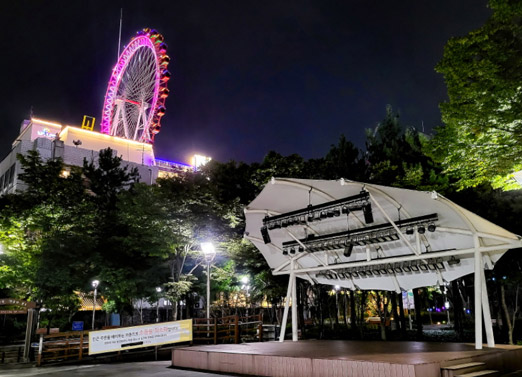
ⓒ Daegu Metropolitan City
TD - 5 Daegu
Old Guam Seowon-Daegu Modern Historical Alleyway-Shinsegae Department Store
Originally serving as an educational site for the Dalseong Seo clan, it has since been transformed into a guesthouse as well as a place where you can try traditional Korean games, such as tuho, neolttwigi, yutnori, archery, and more.
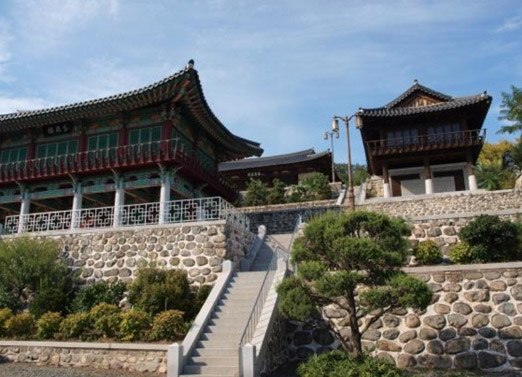
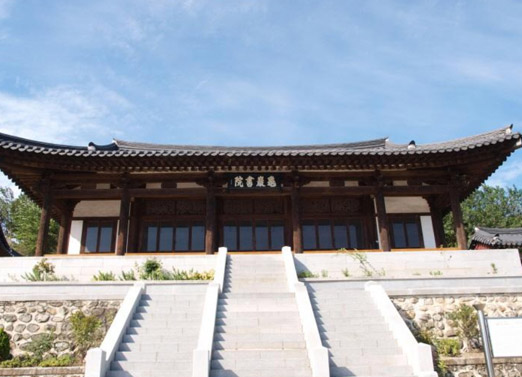

Travel through Daegu’s modern and contemporary history and embark on a voyage through time. Since Daegu was less affected by the Korean War than other parts of the country, you will be able to see the city’s past and its present.
ⓒ Daegu Metropolitan City
The Shinsegae Department Store is a premier shopping destination offering a luxurious and comprehensive retail experience. This upscale department store features a wide array of high-end fashion brands, cosmetics, home goods, and gourmet food selections.

TD - 6 Daegu
Daegu Modern Historical Alleyway-Daegu National Museum-Daegu Art Museum
Travel through Daegu’s modern and contemporary history and embark on a voyage through time. Since Daegu was less affected by the Korean War than other parts of the country, you will be able to see the city’s past and its present.


ⓒ Daegu Metropolitan City

The Daegu National Museum is a key cultural institution dedicated to preserving and showcasing the region's rich history and cultural heritage. The museum features a diverse array of exhibits, including archaeological artifacts, traditional crafts, ancient pottery, and historical documents that offer a comprehensive overview of Daegu's past.
© 2023. DAEGU NATIONAL MUSEUM All Rights Reserved.
The Daegu Art Museum features both permanent collections and temporary exhibitions, showcasing works by local, national, and international artists. Daegu Art Museum provides visitors with a vibrant and dynamic environment to explore the evolving landscape of modern art.

© DAEGU ARTMUSEUM, KOREA
TD - 7 Daegu
Mt. Palgong Botanic Garden-Donghwasa Temple-Daegu Bangjja Yugi Museum
Mt. Palgong botanical garden is known for its extensive collections of native and exotic plants, providing visitors with a tranquil environment to explore and appreciate nature's beauty.

© 2023. DAEGU NATIONAL MUSEUM All Rights Reserved.


Located 1193m up on Palgong Mountain, it was built in 493 A.D. and is filled with Korean treasures. It is regarded as one of Korea’s most recognizable temples.
© DAEGU ARTMUSEUM, KOREA
Bangjja Yugi is Korean bronzeware traditionally used to make utensils, instruments, and religious items. TToday, it is best known for its use in kitchen utensils, but here, at the only museum dedicated to Bangjja Yugi, you will be able to experience the history behind the art.

ⓒ Daegu Metropolitan City
TH - 1 Hapcheon
Theme Park of the Tripitaka Koreana-Haeinsa Temple-Goryeong Jisandong Ancient Tombs-Daegu Dodong Confucian Academy-Daegu Daejoo Machinery
The Tripitaka Koreana is a Korean collection of Buddhist scriptures that were carved onto 81,258 wooden printing blocks in the 13th century. It was designated as a UNESCO Memory of the World in 2007, and in recognition of its importance, Korea built this theme park dedicated to emphasizing its cultural significance to civilization. It is a well-organized park that will provide you with the necessary information prior to seeing the actual Tripitaka at Haeinsa Temple.

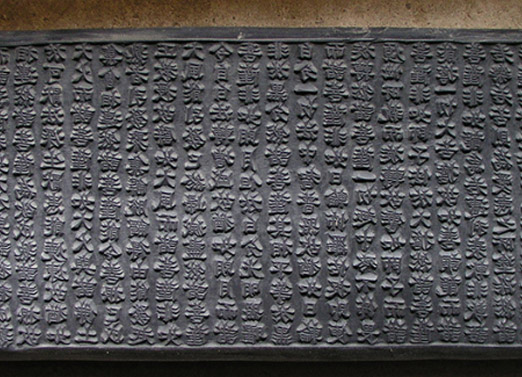
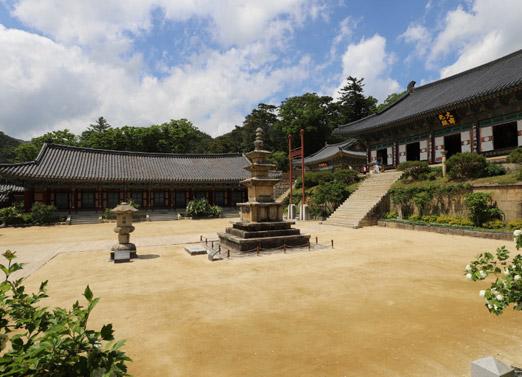
Constructed in 802, it was also a part of the Silla dynasty, though it was built later than the other temples on the tour. However, it holds significance in that it displays the Tripitaka Koreana, also known as the Palman Daejanggyeong (Eighty-Thousand Tripitaka). Because of this, Haeinsa is known as one of the Three Jewel temples, representing the dharma (order and custom) in Korea. It is located in Gaya Mountain National Park and is surrounded by lush foliage.
The Tripitaka Koreana is a Korean collection of Buddhist scriptures that were carved onto 81,258 wooden printing blocks in the 13th century. It was designated as a UNESCO Memory of the World in 2007, and in recognition of its importance, Korea built this theme park dedicated to emphasizing its cultural significance to civilization. It is a well-organized park that will provide you with the necessary information prior to seeing the actual Tripitaka at Haeinsa Temple.
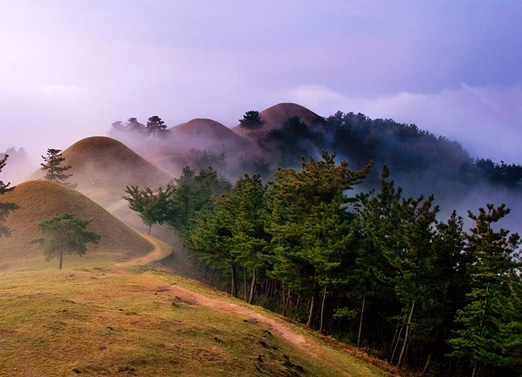
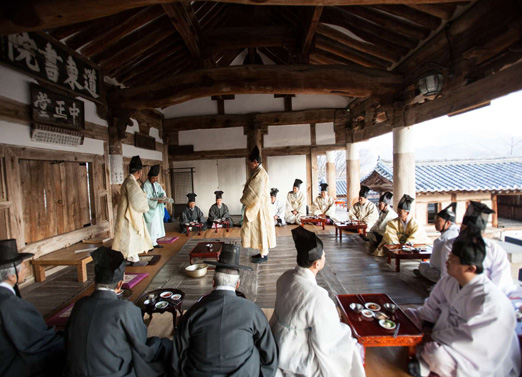
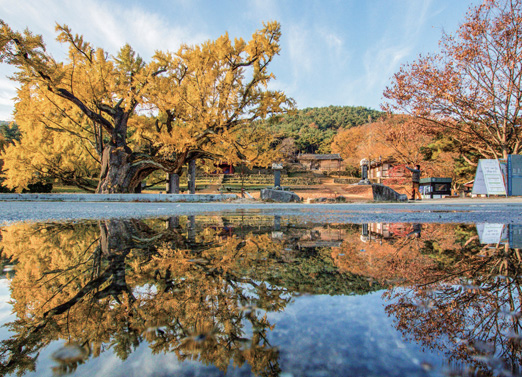
Dodong Confucian Academy, established in 1568 during the early Joseon era, was dedicated to Hanhwoldang Kim Goeng-pil in 1605. Designated as Historical Site no. 488 in 2007 and a UNESCO World Heritage Site in July 2019, Dodong means "the Way of Neo-Confucianism comes from the East." It was renowned among the Five Great Confucian Academies and survived efforts to abolish such institutions, such as Regent Prince Heungseon’s proclamation to abolish Confucian academies throughout the country in 1871. Adjacent to Dodong Seowon, it features a history and culture exhibition hall and a Confucian Culture Hall for leisure and cultural activities.
Founded in 1987, Daejoo Machinery Co. Ltd specializes in Factory Automation Facilities and Compressed Air Filtration Systems. Renowned for its secure technology, energy efficiency, and reliability, Daejoo has grown steadily, earning recognition as a regional leader and international acclaim for its high-quality turbo compressors and innovative auxiliary facilities. Guided by the vision of becoming a global leader in fluid machinery solutions, Daejoo continues to invest in future industries, cutting-edge technologies, eco-friendly solutions, and market expansion. Committed to societal prosperity, the company reinvests its profits into community and national development.
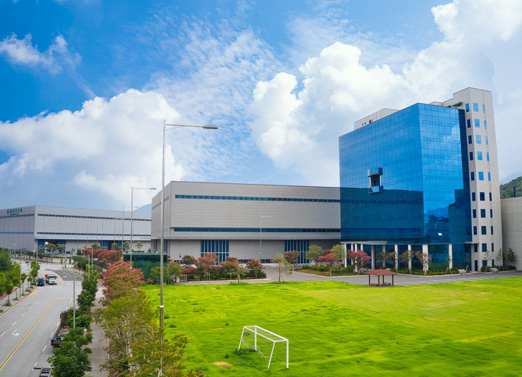
ⓒ 2020 Haeinsa
TG - 1 Gyeongju
Hwangridan-gil-Daereungwon Ancient Tomb Complex-Cheomseongdae
Hwangridan-gil is a relatively new street in Gyeongju with over 700 shops, cafés, bakeries, restaurants, and accommodations. Though other Korean cities are known for their skyscrapers and buildings, Gyeongju, as a heritage site, imposes limits on building height, with most of the buildings only having one or two floors. Many buildings are also built in the form of a hanok (traditional Korean building), creating a warm and welcoming atmosphere for visitors.
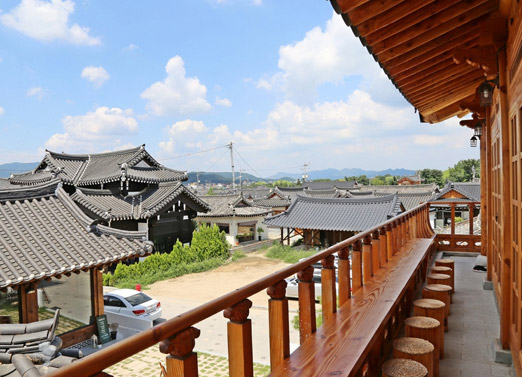

Tomb Complex
Built between the fifth and sixth century during the Silla Dynasty, it is one of the most iconic ancient burial sites in Korea, housing the tombs of the royal family. There are still new sites being excavated to this day. Within the complex, you will have the opportunity to view and enter the tombs that have been made accessible to the public.
Cheomsongdae, Korea’s 31st national treasure, is an astronomical observatory built in the year 633. It is known to be the oldest surviving observatory in the world.

ⓒ 2019 Gyeongju Tourguide
TG - 2 Gyeongju
Bulguksa Temple-Seokguram-Hwangridan gil
The temple is a UNESCO World Heritage Site that is recognized as Historic and Scenic Site No. 1 by the Korean government, housing six national treasures. It was first built as a small temple in the year 528 but grew in size over time as Buddhism spread across Korea. Unfortunately, because of wars throughout history, the wooden buildings were burnt down and reconstructed in 1604.
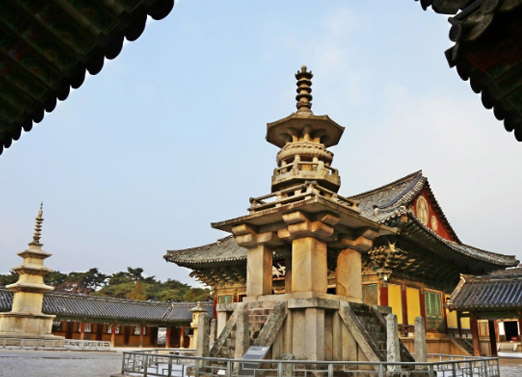
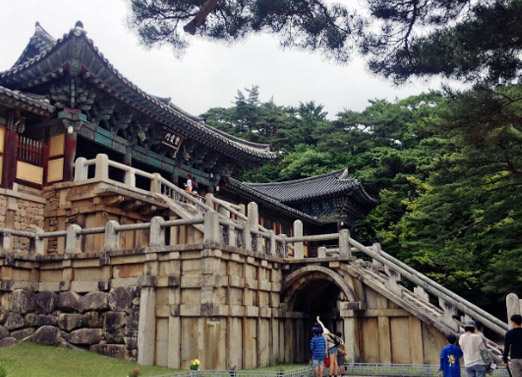
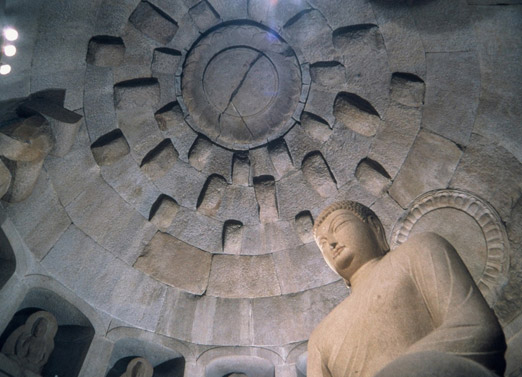
Designated as a UNESCO World Heritage Site since 1995, this sculpture of Buddha sitting on a lotus is built in an artificial grotto. Within the grotto, you will experience a feeling of grandeur as well as a sense of peace and tranquility from the look on the sculpture’s face. It is a great representation of Buddhist art during the Silla Dynasty.
Hwangridan-gil is a relatively new street in Gyeongju with over 700 shops, cafés, bakeries, restaurants, and accommodations. Though other Korean cities are known for their skyscrapers and buildings, Gyeongju, as a heritage site, imposes limits on building height, with most of the buildings only having one or two floors. Many buildings are also built in the form of a hanok (traditional Korean building), creating a warm and welcoming atmosphere for visitors.

ⓒ 2019 Gyeongju Tourguide
TG - 3 Gyeongju
Donggung Palace and Wolji Pond-Gyochon Village-Waljeonggyo Bridge-Gyeongju National Museum

Wolji Pond
Wolji, an artificial pond built in 674, was accompanied by a separate palace for the princes during the Silla Dynasty. Donggung, meaning ‘Eastern Palace’, was established after Silla’s unification of the Three Kingdoms as the main residency for the prince. It is known for its beautiful scenery, particularly during sunset and at night, when the reflections from the pond make it even more beautiful.
Built in 682, it was home to the first national university in Silla, known by the name “Gukhak” and later called “Hyanghak” or “Hyanggyo” during the Joseon Dynasty. It is centered around the Gyeongju Choi Clan, a prominent Korean family. The hanok (traditional Korean houses) in the area allows visitors to experience traditional Korean life.
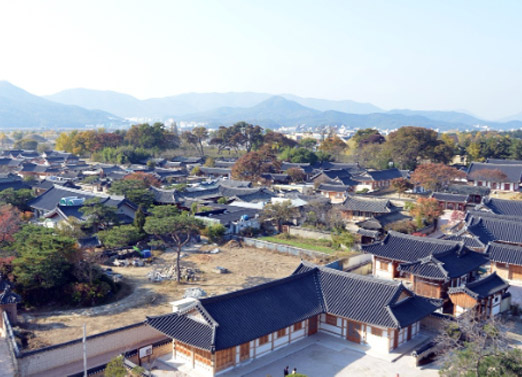

Not far from Gyochon Village is Woljeonggyo, a wooden bridge over the river. Originally, it was recorded to have been built in 760 and lasted for over 520 years. However, historical records indicate that it was burned down during a war, and all that was left of the bridge were its stone piers. Korea decided to reconstruct the bridge in 2004, and it was reopened in 2018.
ⓒ 2019 Gyeongju Tourguide
National Museum
Gyeongju National Museum encapsulates over 1,000 years of Silla history in one place, offering an opportunity for visitors to view cultural treasures and artifacts that have been discovered and preserved. Its main attractions are the royal family’s crowns and jewelry, providing for a fascinating comparison to artifacts from visitors’ home countries.
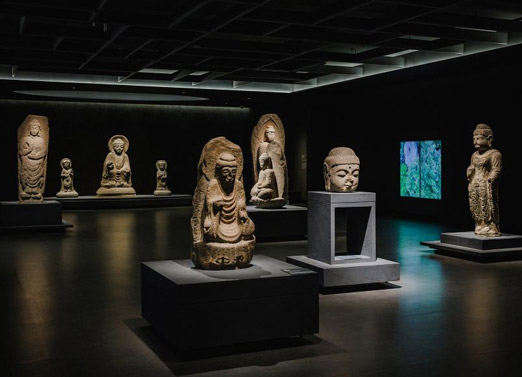
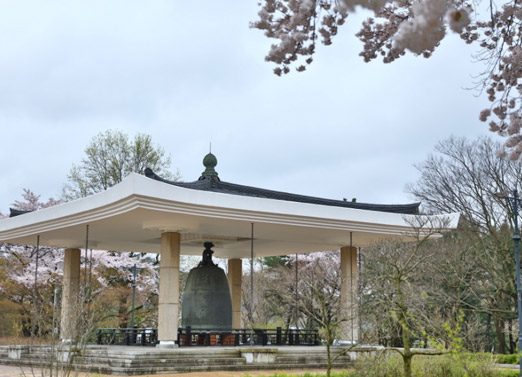

ⓒ 2017 Gyeongju National Museum
TG - 4 Gyeongju
Gyeongju National Museum-Daereungwon Ancient Tomb Complex-Cheomseongdae-Bulguksa Temple



National Museum
Gyeongju National Museum encapsulates over 1,000 years of Silla history in one place, offering an opportunity for visitors to view cultural treasures and artifacts that have been discovered and preserved. Its main attractions are the royal family’s crowns and jewelry, providing for a fascinating comparison to artifacts from visitors’ home countries.
ⓒ 2017 Gyeongju National Museum
Tomb Complex
Built between the fifth and sixth century during the Silla Dynasty, it is one of the most iconic ancient burial sites in Korea, housing the tombs of the royal family. There are still new sites being excavated to this day. Within the complex, you will have the opportunity to view and enter the tombs that have been made accessible to the public.


Cheomsongdae, Korea’s 31st national treasure, is an astronomical observatory built in the year 633. It is known to be the oldest surviving observatory in the world.
ⓒ 2019 Gyeongju Tourguide
The temple is a UNESCO World Heritage Site that is recognized as Historic and Scenic Site No. 1 by the Korean government, housing six national treasures. It was first built as a small temple in the year 528 but grew in size over time as Buddhism spread across Korea. Unfortunately, because of wars throughout history, the wooden buildings were burnt down and reconstructed in 1604.


TG - 5 Gyeongju
Yangdong Folk Village Artifact Exhibition Hall-Hwangnyongsa Temple History and Culture Center-Donggung Palace and Wolji Pond
Discover the rich cultural heritage of Korea through a collection of traditional clothing, household items, and ceremonial objects from the Joseon Dynasty. Located in the UNESCO World Heritage site of Yangdong Folk Village, the exhibition hall provides a unique insight into the daily lives and enduring customs of the villagers.
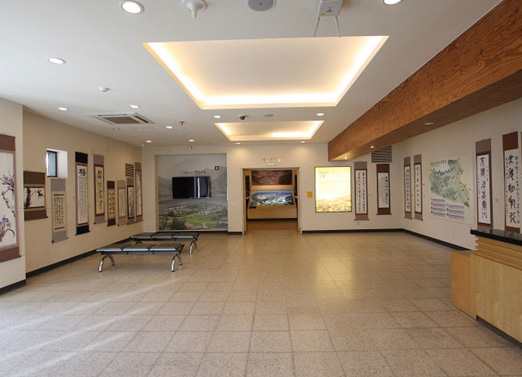
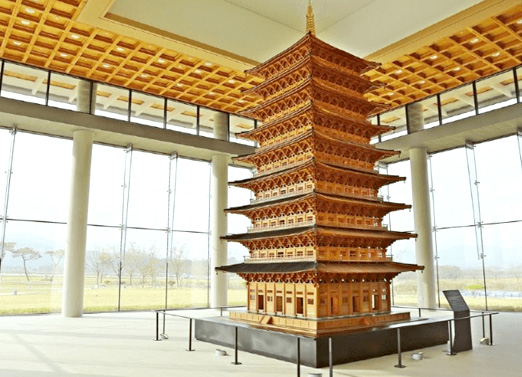
The Hwangnyongsa History Museum is dedicated to the history and legacy of the ancient Hwangnyongsa Temple. Once one of the largest and most significant Buddhist temples in East Asia, Hwangnyongsa played a crucial role during the Silla Dynasty.
© 한국관광공사. All rights reserved.
Wolji Pond
Wolji, an artificial pond built in 674, was accompanied by a separate palace for the princes during the Silla Dynasty. Donggung, meaning ‘Eastern Palace’, was established after Silla’s unification of the Three Kingdoms as the main residency for the prince. It is known for its beautiful scenery, particularly during sunset and at night, when the reflections from the pond make it even more beautiful.

TB - 1 Busan
Haedong Yonggung Temple-United Nations Peace Memorial-Dongbaekseom Island-Haeundae
Haedong Yonggung Temple is a unique and picturesque Buddhist temple renowned for its stunning seaside setting. Unlike most temples in Korea that are nestled in the mountains, Haedong Yonggungsa is perched on a cliff overlooking the East Sea, providing visitors with breathtaking ocean views and a serene atmosphere. Founded in 1376 during the Goryeo Dynasty, the temple is dedicated to Haesu Gwaneum Daebul, the Sea Goddess Buddha, and is known for its beautiful statues, intricate carvings, and vibrant architecture.
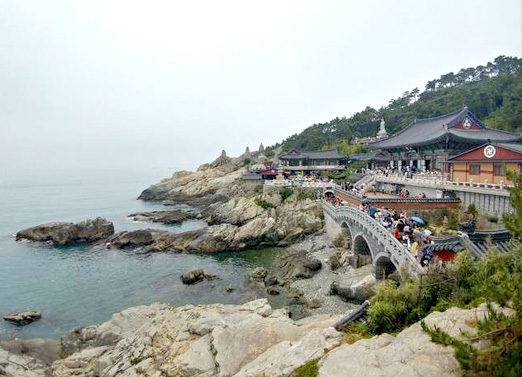
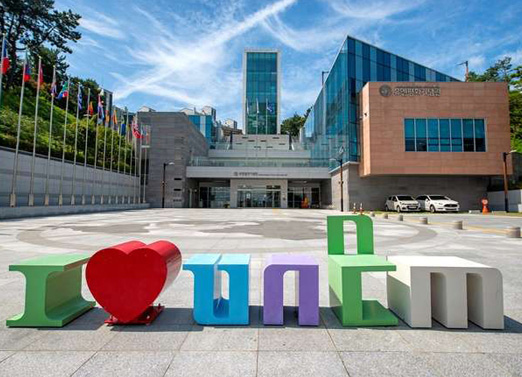
The United Nations Peace Memorial is a poignant and historically significant site dedicated to honoring the sacrifices of United Nations forces during the Korean War (1950-1953). This memorial serves as a tribute to the soldiers from various UN member countries who fought and died in the conflict, working towards the restoration of peace on the Korean Peninsula. The memorial stands as a symbol of global solidarity and the enduring hope for a peaceful future.
© Busan Metropolitan City. All rights reserved.
Dongbaekseom is a small, yet picturesque island located off the coast of Busan, South Korea. Despite being connected to the mainland, Dongbaekseom retains its island charm and is a popular destination for both locals and tourists seeking natural beauty and tranquility. Visitors can explore the island via well-maintained walking trails that meander through the lush vegetation, offering breathtaking views of the coastline and the blue expanse of the East Sea.
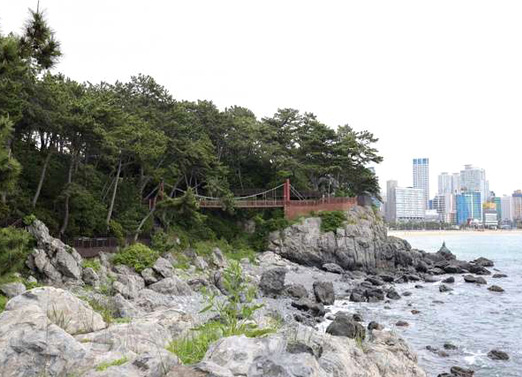
© 2020. Mobius6. All rights reserved.
TB - 2 Busan
Yongdusan Park-Gukje Market-Jagalchi Market
Yongdusan Park is named after its dragon-like shape ("Yongdu" means dragon's head), which is a symbol of Busan's guardian spirit. The park is also home to several monuments and statues, including the statue of Admiral Yi Sun-sin, a revered Korean naval hero known for his victories against Japanese invaders in the late 16th century Joseon Dynasty. The park's well-maintained gardens, walking paths, and pavilions provide a peaceful retreat from the bustling city below.
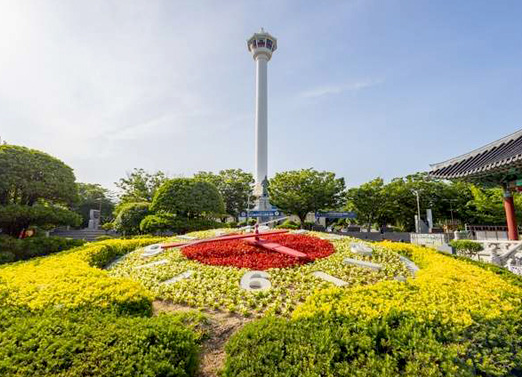

© Busan Metropolitan City
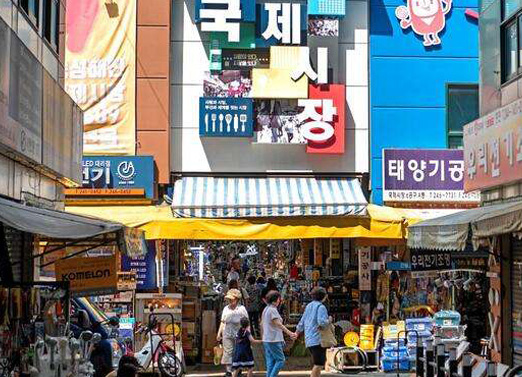
Gukje Market is one of the country's largest and most famous traditional markets. Established in the aftermath of the Korean War, the market has grown into a bustling hub of commerce and culture. Gukje Market offers a diverse array of goods, ranging from clothing, accessories, and household items to electronics, souvenirs, and traditional Korean foods. Gukje Market is not only a shopping destination but also a place where the rich history and resilience of Busan's people are vividly displayed.
© Busan Metropolitan City. All rights reserved.
Jagalchi Market is the country's largest seafood market and a major attraction for both locals and tourists. Situated along the bustling waterfront, the market is famous for its extensive array of fresh seafood, including fish, shellfish, octopus, and seaweed. Visitors can watch as vendors skillfully prepare and sell their catch, and they can even select seafood to be cooked on-site at one of the market's many restaurants.

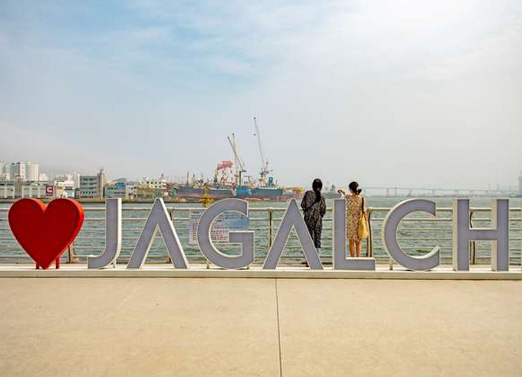
© 2017. Altostratus. All rights reserved.
© Busan Metropolitan City. All rights reserved.
TA - 1 Andong
Andong Hahoe Village-Byeongsan Private Confucian Academy
Surrounded by the Nakdonggang River, it is predominantly home to the Pungsan Ryu (Korean family name) clan, who have lived in this area for nearly 600 years. The traditional village became a UNESCO Heritage site in 2010. It has a rich history and houses several cultural treasures and heritages like Hahoe masks, which prompted Queen Elizabeth’s visit to the village in 1999.
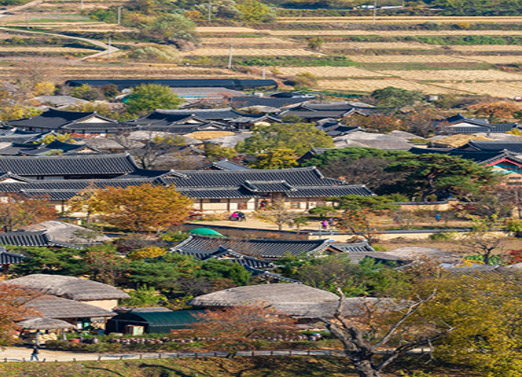
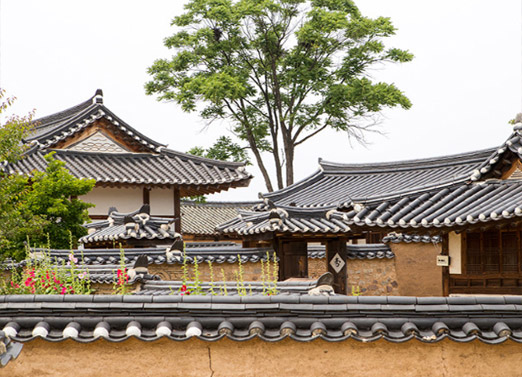
ⓒ 2021 Daegu Convention & Visitors Bureau
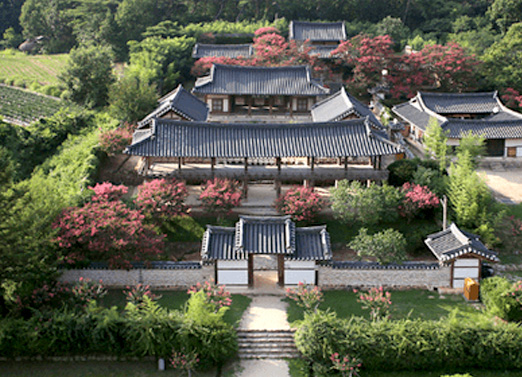
Byeongsan Seowon, established in 1613, is a historic Confucian academy that exemplifies the scholarly traditions of the Joseon Dynasty. The architectural layout of Byeongsan Seowon features traditional wooden buildings, including lecture halls, dormitories, and a library, all designed in harmony with the natural landscape. Byeongsan Seowon is a testament to the enduring legacy of Confucian education and a significant cultural landmark in Andong.
ⓒ byeongsan.net. All Rights Reserved.
TC - 1 Gimcheon
Gimcheon Jikjisa Temple
Constructed in 418 during the Silla Era, this temple stands as one of the oldest temples in Korea, reflecting Buddhism’s 1700-year history in the country. Similar to several other temples in Korea, it is built deep in the mountains, blending harmoniously with the surrounding pine tree forest.
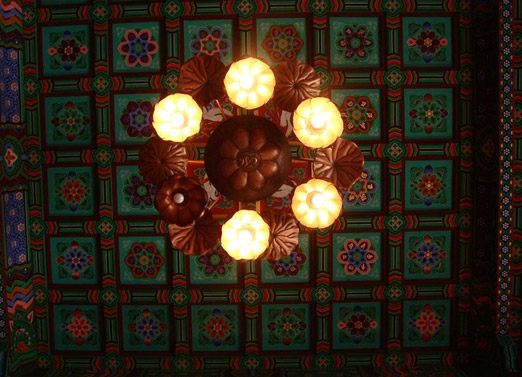
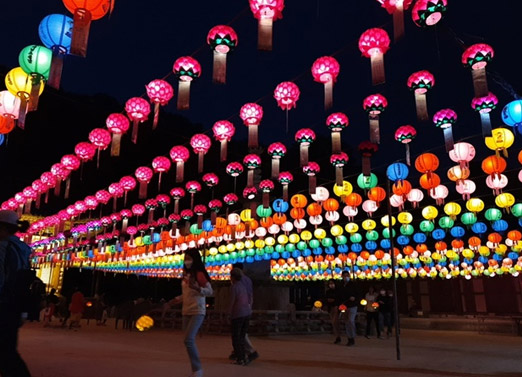
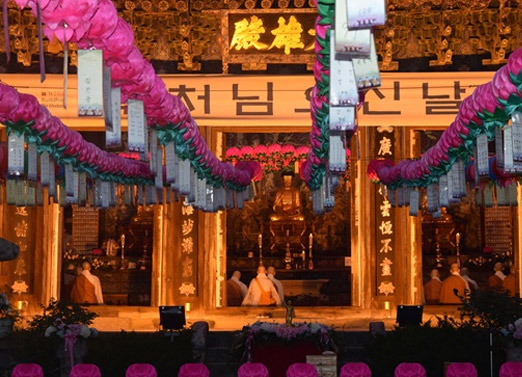
ⓒ 2020 Gimchon-Si
TT - 1 Changwon LG Electronics Smart Park Tour
Lighthouse Factory - Signature Gallery
LG Smart Park, a production base of LG Electronics (LG), has been selected as a Lighthouse Factory by the World Economic Forum (WEF). This factory integrates AI and Big Data for an intelligent, autonomous manufacturing process, enhancing both safety and efficiency in production.
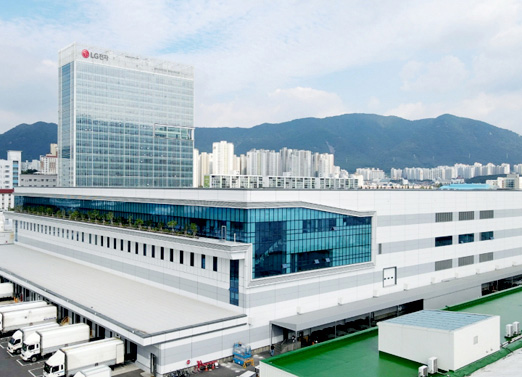

The Signature Gallery showcases LG's premium home appliances, combining the latest technology with innovative design. Visitors can experience the high-end features and functionalities of the LG Signature product line.
Optional Tour
- · Optional Tour Apply: ~ August 3rd, 11:59 PM KST

- Schedule
August 26~29, 2024
* Except August 28 (Congress Tour)

- Programs
OP-1 Dongwhasa Temple Tour, OP-2 Suseong Lake Tour, OP-3 Modern History Alley Tour, OP4-5 Nakdong River Tour, OP-6 Ocean Theme Park Tour, OP-7 Bulguksa Temple Tour, OP-8 Hahoe Village Tour
OP - 1. Donghwasa Temple Tour
Donghawsa Temple-Palgongsan Cable Car
- Tour Dates
8/26, 8/27, 8/29 (Price: KRW 70,000)
- Time
13:00~17:00
- *Cable Car Round-Trip fee included
The cable car ride to Sinnimbong Peak (850 m) on Palgong Mountain offers breathtaking scenery along the way. At the peak, visitors encounter Gatbawi, a renowned 5.48-meter granite Buddha statue, making it one of Korea’s most revered prayer
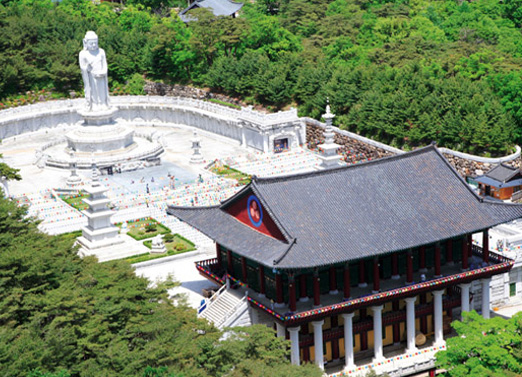
-ⓒ Daegu Metropolitan City

The cable car ride to Sinnimbong Peak (850 m) on Palgong Mountain offers breathtaking scenery along the way. At the peak, visitors encounter Gatbawi, a renowned 5.48-meter granite Buddha statue, making it one of Korea’s most revered prayer locations.
OP - 2. Suseong Lake Tour
Apsan Cable car-Suseong Lake
- Tour Dates
8/26, 8/27, 8/29 (Price: KRW 60,000)
- Time
13:00~17:00
- *Cable Car Round-Trip fee included
Located in Nam-gu, Daegu, Apsan Observatory offers a panoramic view of downtown Daegu, seamlessly blending urban and natural landscapes along with their historical significance and future potential. A popular destination for tourists and locals alike, the observatory also serves as an educational site, enriching visitors' understanding of Daegu's significance.
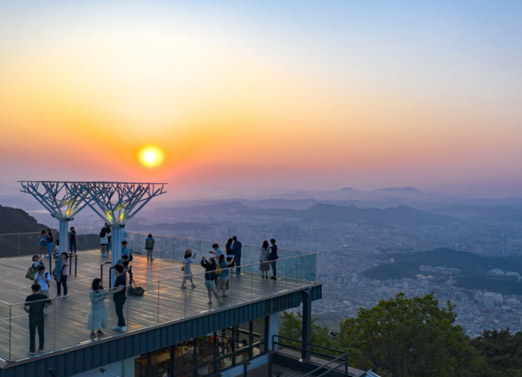
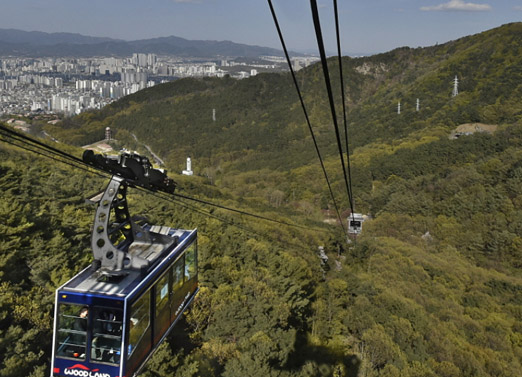
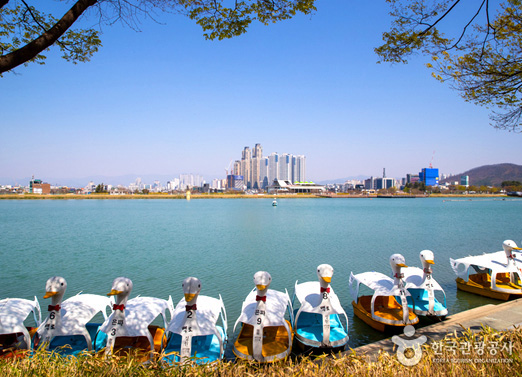
Suseong Lake is a premier ecotourism destination featuring a serene wooden boardwalk perfect for leisurely strolls and pedal boat rides. Surrounded by ambient lighting, the lake offers a warm, inviting atmosphere. A highlight is the visual music fountain, offering captivating nighttime performances twice daily from May to October, adding a unique charm to the area.
OP - 3. Modern History Alley Tour
Modern Historical Alleyway-Seomun Market
- Tour Dates
8/26, 8/27, 8/29 (Price: KRW 50,000)
- Time
13:00~17:00
Travel through Daegu’s modern and contemporary history and embark on a voyage through time. Since Daegu was less affected by the Korean War than other parts of the country, you will be able to see the city’s past and its present.



Located near downtown, it is the biggest market in Daegu and boasts a rich history as one of the three biggest markets of the Joseon Dynasty. Today, it is known for its wide variety of food and its emphasis on selling textile goods. It also features a night market that is open from 7:00 p.m. on Fridays through Sundays.
OP 4-5. Nakdong River Tour
Samunjin History Park-Samunjin Ferry-Gangjeong Goryeongbo Weir (The ARC)
- Tour Dates
8/27, 8/29 (Price: KRW 70,000)
- Time
09:30~15:00 (OP-4) / 12:00~17:00 (OP-5)
- *Ferry fare included
The Samunjin Ferry Stop was historically recognized as a hub for operating essential ferryboats, crucial for river crossings in the past. Although its role has changed over time, the history and tradition continues to be preserved, making it a beautiful landmark even today.
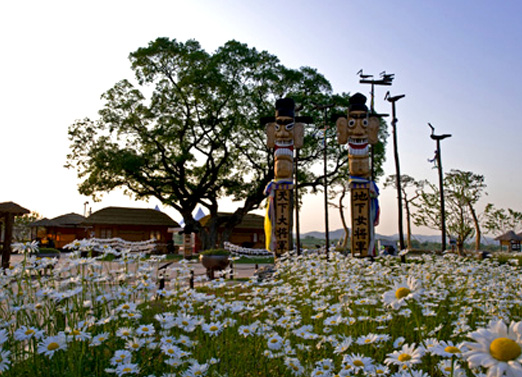
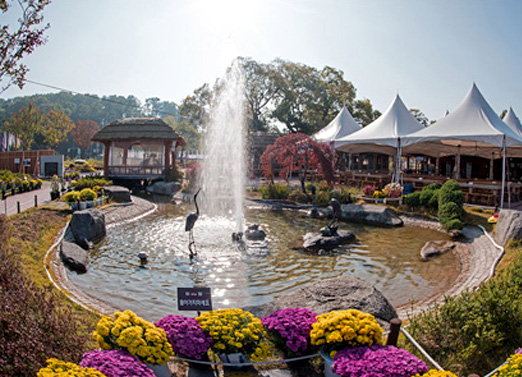
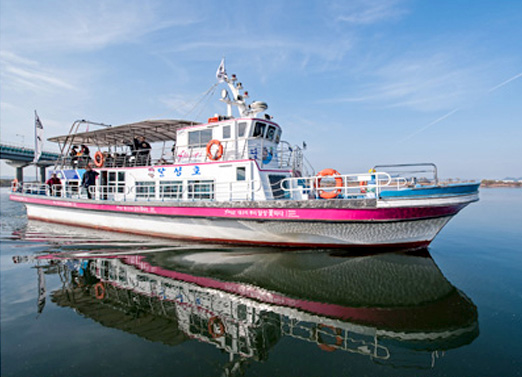
The ferry on the Samunjin offers a special experience of enjoying the beautiful landscape along the river. This ferry travels along the Taegyeongchun, passing through various attractions and natural scenery, provding passengers with a comfortable and enjoyable time.
-ⓒ 2014 by 달성군시설관리공단
The ARC is a beautiful architectural masterpiece, especially standing out with its design inspired by water and nature. The surrounding area features waterfront spaces and bike paths, providing a great place for residents to relax. Among them, The ARC’s third-floor observatory is particularly renowned as the ultimate healing spot.
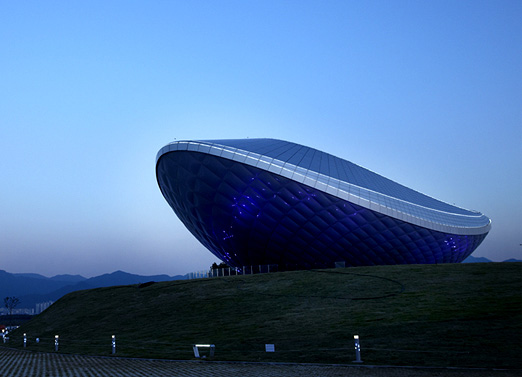
-ⓒ K-water
OP - 6. Ocean Theme Park
Yeonorang Seonyeo Theme Park-Pohang Jukdo Market
- Tour Dates
8/26, 8/27, 8/29 (Price: KRW 85,000)
- Time
12:30~19:00
Theme Park
The Yeonorang Seonyeo Theme Park is a unique place located in Pohang, reflecting traditional Korean stories in a themed park. Situated around the seaside, this beautiful park is a popular destination for strolls. It attracts many visitors, offering a delightful experience with carious thematic elements based on the tales of Yeonorang and Seonyeo.
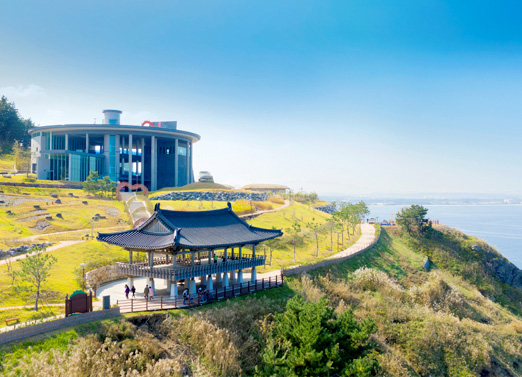
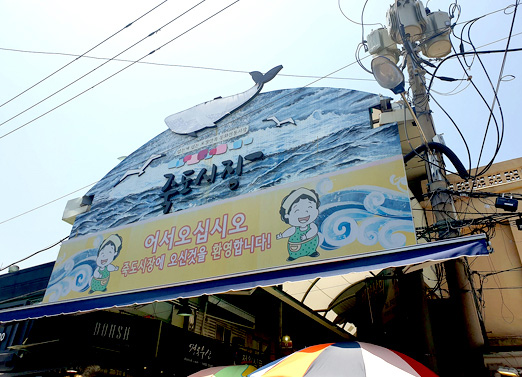
Jukdo Market is the largest traditional market on the East Coast, boasting a combination of fish and grain markets. It is renowned for selling a variety of goods, including seafood and agricultural products. In particular, the fish market occupies a significant portion of the market and visitors can purchase fresh seafood at affordable prices throughout the year.
-ⓒ 2020 Gyeongsangbuk-do
OP - 7. Bulguksa Temple Tour
Bulguksa Temple-Hwangridan-gil-Daereungwon Ancient Tomb Complex
- Tour Dates
8/27, 8/29 (Price: KRW 90,000)
- Time
12:30~19:00
- *Admission Fee included
The temple is a UNESCO World Heritage Site that is recognized as Historic and Scenic Site No. 1 by the Korean government, housing six national treasures. It was first built as a small temple in the year 528 but grew in size over time as Buddhism spread across Korea. Unfortunately, because of wars throughout history, the wooden buildings were burnt down and reconstructed in 1604.



Hwangridan-gil is a relatively new street in Gyeongju with over 700 shops, cafés, bakeries, restaurants, and accommodations. Though other Korean cities are known for their skyscrapers and buildings, Gyeongju, as a heritage site, imposes limits on building height, with most of the buildings only having one or two floors. Many buildings are also built in the form of a hanok (traditional Korean building), creating a warm and welcoming atmosphere for visitors.
ⓒ 2019 Gyeongju Tourguide
Tomb Complex
Built between the fifth and sixth century during the Silla Dynasty, it is one of the most iconic ancient burial sites in Korea, housing the tombs of the royal family. There are still new sites being excavated to this day. Within the complex, you will have the opportunity to view and enter the tombs that have been made accessible to the public.

OP - 8. Andong
Hahoe Village-Byeongsan Private Confucian Academy
- Tour Dates
8/27, 8/29 (Price: KRW 90,000)
- Time
12:30~19:00
- *Admission Fee included
Surrounded by the Nakdonggang River, it is predominantly home to the Pungsan Ryu (Korean family name) clan, who have lived in this area for nearly 600 years. The traditional village became a UNESCO Heritage site in 2010. It has a rich history and houses several cultural treasures and heritages like Hahoe masks, which prompted Queen Elizabeth’s visit to the village in 1999.


ⓒ 2021 Daegu Convention & Visitors Bureau

Byeongsan Seowon, established in 1613, is a historic Confucian academy that exemplifies the scholarly traditions of the Joseon Dynasty. The architectural layout of Byeongsan Seowon features traditional wooden buildings, including lecture halls, dormitories, and a library, all designed in harmony with the natural landscape. Byeongsan Seowon is a testament to the enduring legacy of Confucian education and a significant cultural landmark in Andong.
ⓒ byeongsan.net. All Rights Reserved.
Spouse Tour

- Schedule
August 26~29, 2024
* Except August 28 (Congress Tour)

- Programs
ST1-2. Daegu Nakdong River Tours, ST-3. Mt. Palgong Tour, ST-4. Theme parks with ocean views
ST1-2 Daegu Nakdong River Tour
Samunjin History Park-Ferry-Gangjeong Goryeongbo Weir (The ARC)
The Samunjin Ferry Stop was historically recognized as a hub for operating essential ferryboats, crucial for river crossings in the past. Although its role has changed over time, the history and tradition continues to be preserved, making it a beautiful landmark even today.



The ferry on the Samunjin offers a special experience of enjoying the beautiful landscape along the river. This ferry travels along the Taegyeongchun, passing through various attractions and natural scenery, provding passengers with a comfortable and enjoyable time.
-ⓒ 2014 by 달성군시설관리공단
The ARC is a beautiful architectural masterpiece, especially standing out with its design inspired by water and nature. The surrounding area features waterfront spaces and bike paths, providing a great place for residents to relax. Among them, The ARC’s third-floor observatory is particularly renowned as the ultimate healing spot.

-ⓒ K-water
ST-3 Mt. Palgong Tour
Palgongsan Cable Car-Donghwasa Temple
The cable car ride to Sinnimbong Peak (850 m) on Palgong Mountain offers breathtaking scenery along the way. At the peak, visitors encounter Gatbawi, a renowned 5.48-meter granite Buddha statue, making it one of Korea’s most revered prayer locations.


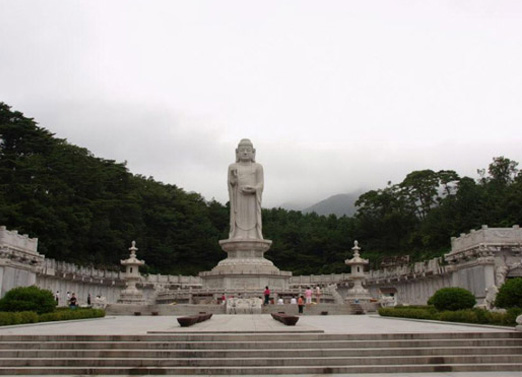
Located 1193m up on Palgong Mountain, it was built in 493 A.D. and is filled with Korean treasures. It is regarded as one of Korea’s most recognizable temples.
-ⓒ Daegu Metropolitan City
ST-4 Theme parks with ocean views
Yeonorang Seonyeo Theme Park-Pohang Jukdo Market
Theme Park
The Yeonorang Seonyeo Theme Park is a unique place located in Pohang, reflecting traditional Korean stories in a themed park. Situated around the seaside, this beautiful park is a popular destination for strolls. It attracts many visitors, offering a delightful experience with carious thematic elements based on the tales of Yeonorang and Seonyeo.


Jukdo Market is the largest traditional market on the East Coast, boasting a combination of fish and grain markets. It is renowned for selling a variety of goods, including seafood and agricultural products. In particular, the fish market occupies a significant portion of the market and visitors can purchase fresh seafood at affordable prices throughout the year.
-ⓒ 2020 Gyeongsangbuk-do






